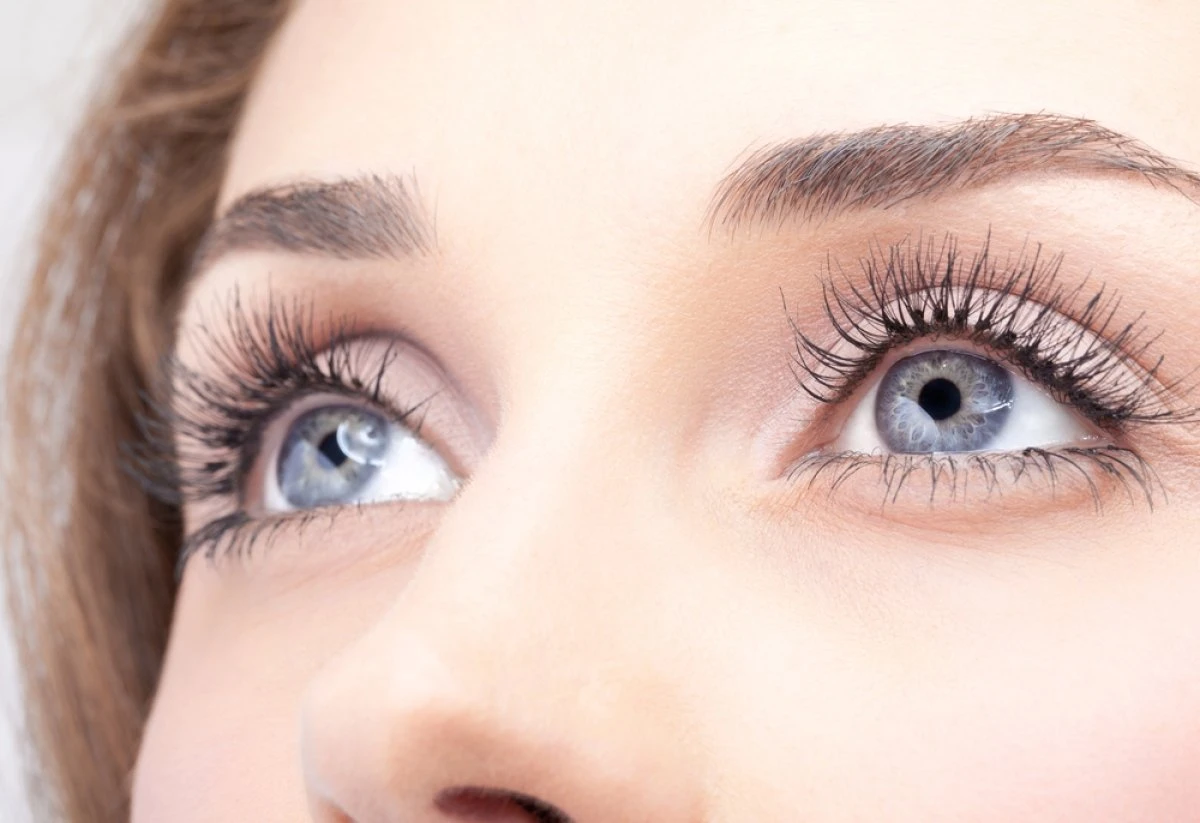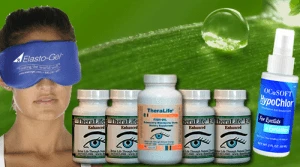To alleviate eye strain, consider TheraLife’s innovative solutions. As the only company offering oral eye treatment care, TheraLife provides unique benefits for its customers. Our range of products is designed to target and relieve symptoms of various eye conditions, ensuring comprehensive eye health support. By incorporating techniques like palming, the 20-20-20 rule, and gentle eye massages with TheraLife’s products, you can experience enhanced relaxation and comfort. The application of a warm compress, regular blinking exercises, and guided deep breathing are supported by our clinically recommended methods to maintain moisture and reduce tension. Additionally, eye rolling with focus shifting is complemented by our specialized care, helping to relax tired muscles effectively. Discover how TheraLife’s products can be integrated into your daily routine to protect your vision and achieve optimal eye health.
Best Dry Eye Treatment From TheraLife- When Drops Don’t Work.
Key Takeaways
- Practice the 20-20-20 rule to give your eyes regular breaks and reduce digital eye strain.
- Apply warm compresses to relax eye muscles and help relieve dry eye symptoms.
- Perform intentional blinking exercises to maintain eye moisture and prevent dryness during screen use.
- Use deep breathing and guided relaxation techniques to lower stress and relax facial muscles around the eyes.
- Roll your eyes gently in circular motions and shift focus between near and distant objects to relax eye muscles.
Palming Your Eyes
Despite its popularity, palming—covering your closed eyes with your hands to relax them—has not been supported by scientific evidence as an effective technique for relieving eye strain.
You might encounter palming as part of eye yoga or visual meditation routines, which claim to reduce discomfort and fatigue after prolonged screen use.
However, current clinical studies haven’t demonstrated that palming provides measurable benefits for your eye health or function.
While you may experience a temporary sense of relaxation from the act itself, this effect likely comes from taking a brief break rather than the specific method of palming.
Chronic dry eyes can exacerbate eye strain, and addressing the root cause with effective treatment options like TheraLife Eye capsules may provide more substantial relief.
If you’re seeking reliable, evidence-based strategies for managing eye strain, it’s important to prioritize techniques with proven efficacy rather than relying solely on practices like palming or eye yoga.
Practicing the 20-20-20 Rule
While palming lacks scientific support, the 20-20-20 rule stands out as an evidence-based method for reducing digital eye strain.
The rule’s simple: every 20 minutes, look at something at least 20 feet away for 20 seconds. This gives your eyes regular visual breaks, helping to relax the focusing muscles and reduce fatigue associated with prolonged screen use.
Studies show that following this routine can decrease symptoms like dryness, blurred vision, and discomfort. You don’t need any special equipment—just set a timer or reminder. Additionally, incorporating artificial tears into your routine can provide temporary relief from the dryness associated with digital eye strain.
Gentle Eye Massage Techniques
Although many people turn to gentle eye massage for relief from eye strain, current scientific evidence doesn’t support its effectiveness in reducing symptoms.
If you choose to try this technique, focus on applying light pressure to areas around your eyes, such as the brow bone and temples. Some individuals target acupressure points, believing this may promote relaxation, but clinical research hasn’t confirmed these benefits.
Avoid using essential oils near your eyes, as they can cause irritation or allergic reactions. Always wash your hands before touching your face, and use clean fingertips to prevent infection.
While gentle massage may help you feel relaxed, it shouldn’t replace proven methods like regular breaks and proper lighting for eye strain relief. Crusty residues on eyes upon waking are typically normal, but persistent or excessive discharge could indicate a problem. Consult your healthcare provider for personalized advice.
Warm Compress Application
You can use a warm compress to relax the muscles around your eyes and improve circulation, which may ease strain and discomfort. Make sure you follow correct steps for applying the compress to prevent irritation and maximize benefits. For best results, aim to use a warm compress one to two times daily, based on your symptoms and comfort. Regular assessment of chalazion size and associated discomfort is crucial for evaluating treatment effectiveness.
Benefits of Heat Therapy
Applying heat therapy through a warm compress can help relax the muscles around your eyes, improve circulation, and provide relief from discomfort associated with eye strain. When you use heat application, you promote vasodilation, which increases blood flow to the delicate tissues surrounding your eyes. This enhanced circulation can reduce muscle tension and encourage faster healing of minor irritations caused by prolonged screen time or reading. Clinical studies support these therapeutic benefits, showing that gentle warmth can soothe symptoms of dry eyes, decrease muscle spasms, and decrease the sensation of fatigue. Consistent application of heat is crucial for better results; multiple applications per day enhance effectiveness of warm compresses.
Proper Compress Application Steps
For ideal relief, follow a series of straightforward steps to safely apply a warm compress to your eyes. Evidence shows that correct technique enhances the effectiveness of heat therapy and minimizes potential irritation.
Begin by selecting safe compress materials, such as a clean washcloth or a commercially available eye mask. Make sure your hands and the compress are clean before proceeding.
- Choose compress materials that retain warmth but won’t irritate your skin.
- Wet the compress with warm (not hot) water, ensuring it’s comfortable to touch.
- Wring out excess water to prevent dripping.
- Close your eyes and gently place the compress over both eyes.
- Maintain application duration for 10–15 minutes, checking periodically for comfort.
Regular use of a warm compress can help alleviate dry eye symptoms, improving eye comfort when integrated into your daily routine. This method promotes relief from eye strain while prioritizing safety and comfort.
Frequency for Optimal Relief
Consistent use of a warm compress can maximize relief from eye strain symptoms while supporting overall eye health. For most adults experiencing eye strain due to prolonged screen use, applying a warm compress two to three times daily is recommended. Each session should last around 10 minutes, ideally scheduled during breaks from your ideal screen time routine. This frequency helps reduce discomfort, promote tear gland function, and manage symptoms effectively.
| Session | Time of Day | Duration (minutes) |
|---|---|---|
| First | Morning or noon | 10 |
| Second | Mid-afternoon | 10 |
| Third (if needed) | Evening | 10 |
Adhering to this schedule can prevent recurring eye strain and support your visual comfort. Adjust frequency based on severity, and consult your eye care provider if symptoms persist.
Blinking Exercises for Moisture
You may not realize how often you forget to blink, especially during screen time, but frequent blinking is essential for keeping your eyes moist. Practicing intentional blinking techniques helps spread tears evenly, supporting eye comfort and preventing dry eye symptoms. Regularly blinking can also help maintain eye health by reducing the risk of evaporative dry eye, which can occur due to rapid tear evaporation. Let’s look at how you can use these exercises to maintain healthy moisture levels.
Importance of Frequent Blinking
Many daily activities—especially those involving screens—can decrease your natural blink rate, which leads to increased eye dryness and discomfort.
When you don’t blink as often, your eyes don’t get the hydration they need from the tear film. Frequent blinking habits are essential for maintaining ideal eye hydration and reducing the risk of eye strain.
By making a conscious effort to blink regularly, you help your eyes replenish their moisture, flush away small irritants, and maintain overall comfort.
Consider these benefits of frequent blinking:
- Maintains a stable tear film for improved eye hydration
- Reduces the risk of dry, irritated eyes
- Promotes natural cleaning by clearing debris
- Enhances comfort during screen use
- Supports long-term eye health and visual clarity
Frequent blinking can aid in the natural tear production process, which is crucial for mitigating dry eye symptoms.
Prioritize frequent blinking to keep your eyes healthy and comfortable.
Techniques for Effective Blinking
Building on the importance of frequent blinking, specific blinking exercises can further support your eyes’ moisture and comfort.
To enhance blinking awareness, try the 20-20-20 rule: every 20 minutes, slowly close your eyes for 2 seconds, then squeeze your eyelids gently for another 2 seconds before opening them. This deliberate eyelid movement helps distribute the tear film evenly, reducing dryness and improving eye surface lubrication.
You can also practice full, intentional blinks by gently closing your eyes until your upper and lower lids meet, holding briefly, and then reopening. These exercises promote healthy blinking patterns, which are often disrupted during prolonged screen use.
Consider using TheraLife Eye capsules to revive and restore natural tear production, thereby enhancing the effectiveness of these exercises.
Preventing Dry Eye Symptoms
Although screen time is a common trigger for dry eye symptoms, targeted blinking exercises can help maintain ideal eye moisture. When you focus on screens, your blink rate decreases, which can reduce tear production and worsen dryness.
Practicing regular blinking exercises and adopting good hydration habits reduces your risk of discomfort. Taking scheduled screen breaks further supports tear film stability and eye comfort. For those with autoimmune conditions, TheraLife Autoimmune offers a natural solution to enhance eye moisture levels.
Here’s how you can prevent dry eye symptoms:
- Practice full, deliberate blinks every 20 minutes during screen use.
- Schedule short screen breaks to rest your eyes and encourage natural blinking.
- Drink water consistently to support overall hydration and tear production.
- Adjust your screen’s position to reduce upward gaze, which exposes more of the eye’s surface.
- Use a humidifier if your environment is dry to maintain moisture.
Guided Deep Breathing for Relaxation
When you experience eye strain, guided deep breathing can serve as an effective technique to activate your body’s relaxation response. Controlled breathing helps slow your heart rate and reduce muscle tension, which can directly benefit tired eyes. You’ll want to find a comfortable position, close your eyes, and focus on the sensation of air moving in and out. Incorporating guided imagery or mindful observation—such as picturing calm scenery or sensing each breath—can further enhance relaxation. Evidence supports deep breathing as a method to lower stress hormones, which may ease eye discomfort. Try the following simple routine:
| Step | Action |
|---|---|
| 1. Settle In | Sit comfortably, close your eyes |
| 2. Inhale | Breathe in slowly through your nose |
| 3. Pause | Hold for a count of four |
| 4. Exhale | Release gently through your mouth |
| 5. Repeat | Continue for several cycles |
Eye Rolling and Focus Shifting
If you’re looking for simple exercises to relieve eye strain, eye rolling and focus shifting offer practical ways to relax the eye muscles and reduce fatigue.
These techniques, often included in eye yoga, can be incorporated into your routine to promote ocular comfort, especially during long screen sessions. By intentionally moving and adjusting your gaze, you support natural tear production and help prevent digital eye fatigue.
Clinical studies suggest that regular visual breaks using these methods may improve overall eye health.
- Roll your eyes slowly in a circular motion, clockwise and counterclockwise.
- Shift your focus from a nearby object to a distant one every 20 minutes.
- Practice alternating between focusing on your thumb and a far point.
- Combine eye rolling with deep breaths for added relaxation.
- Schedule frequent visual breaks during screen use.
Best Dry Eye Treatment From TheraLife- When Drops Don’t Work.
Frequently Asked Questions
Can Diet or Nutrition Help Reduce Eye Strain?
You can support your eye health and potentially reduce eye strain by focusing on proper nutrient intake.
Evidence shows that nutrients like vitamin A, vitamin C, vitamin E, zinc, and omega-3 fatty acids help protect your eyes against fatigue and damage.
Eating leafy greens, fish, carrots, and citrus fruits provides these essential nutrients.
While diet alone won’t eliminate eye strain, it forms an important part of a thorough approach to maintaining ideal eye health.
Are Blue Light Blocking Glasses Effective for Eye Strain?
If you’d like to give your eyes a little vacation from the digital hustle, you might consider blue light blocking glasses.
Evidence shows they don’t drastically boost visual comfort for most people, as blue light from screens isn’t the main culprit behind eye strain.
Instead, frequent breaks and proper screen habits provide more relief.
Still, if you find they make your eyes feel better, there’s no harm in enjoying that gentle reprieve.
How Does Screen Brightness Affect Eye Comfort?
When you adjust screen brightness settings, you directly impact your eye comfort.
If your screen’s too bright compared to your surroundings, your eyes work harder, which can increase strain. Conversely, screen dimming that’s too extreme makes you squint and can also cause discomfort.
Evidence suggests you should match your screen brightness to ambient lighting. Regularly check and adapt your brightness settings to maintain ideal eye comfort throughout your device use.
Can Certain Medical Conditions Worsen Eye Strain?
You should know that certain medical conditions can worsen eye strain.
For example, glaucoma effects can impact your vision, making your eyes work harder and increasing discomfort.
Diabetes complications, such as diabetic retinopathy, can also alter your eyesight and make you more sensitive to eye fatigue.
If you have these conditions, you’ll want to monitor your symptoms closely and talk to your eye care provider about strategies to reduce eye strain.
What Role Does Proper Lighting Play in Eye Strain Prevention?
Proper lighting plays a critical role in preventing eye strain.
You should guarantee your workspace uses balanced ambient lighting, which reduces the need for your eyes to constantly adjust to changing light levels.
Position light sources to minimize glare reduction on digital screens and printed materials.
Evidence shows that controlling both ambient lighting and glare helps your eyes maintain comfort throughout the day, lowering the risk of fatigue, headaches, and long-term visual discomfort.
Best Dry Eye Treatment From TheraLife- When Drops Don’t Work.
Conclusion
Like Sherlock Holmes honing his skills with keen observation, you can alleviate eye strain through TheraLife’s evidence-based relaxation techniques. TheraLife is the only company offering oral eye treatment care, and its products stand out because they address the root causes of eye discomfort. From palming to warm compresses, and adhering to the 20-20-20 rule, TheraLife’s approach ensures comfort and clarity. These methods, when consistently practiced, can transform how you perceive the world, minimizing discomfort and enhancing focus daily. Trust TheraLife to provide the care your hardworking eyes deserve.
References
- 1.American Optometric Association. Computer vision syndrome. 2017. http://www.aoa.org/patients-and-public/caring-for-your-vision/protecting-your-vision/computer-vision-syndrome?ss0=y. Accessed 22 Feb 2022.
- 2.The Vision Council. Eyes overexposed: The digital device dilemma: digital eye strain report. 2016. http://www.thevisioncouncil.org/content/digital-eye-strain. Accessed 24 Feb 2022.
- 3.Sheppard AL, Wolffsohn JS. Digital eye strain: prevalence, measurement and amelioration. BMJ Open Ophthalmol. 2018;3:e000146. doi: 10.1136/bmjophth-2018-000146. [DOI] [PMC free article] [PubMed] [Google Scholar]
- 4.Németh J, Tapasztó B, Aclimandos WA, et al. Update and guidance on management of myopia. European Society of Ophthalmology in cooperation with International Myopia Institute. Eur J Ophthalmol. 2021;31(3):853–883. doi: 10.1177/1120672121998960. [DOI] [PMC free article] [PubMed] [Google Scholar]
- 5.Usgaonkar U, Shet Parkar SR, Shetty A. Impact of the use of digital devices on eyes during the lockdown period of COVID-19 pandemic. Indian J Ophthalmol. 2021;69(7):1901–1906. doi: 10.4103/ijo.IJO_3500_20. [DOI] [PMC free article] [PubMed] [Google Scholar]
- 6.https://www.aao.org/eye-health/tips-prevention/computer-usage. 2022. Accessed 10 June 2022.
- 7.Hashim JH, Adman MA, Hashim Z, Mohd Radi MF, Kwan SC. COVID-19 epidemic in Malaysia: epidemic progression, challenges, and response. Front Public Health. 2021;7(9):560592. doi: 10.3389/fpubh.2021.560592. [DOI] [PMC free article] [PubMed] [Google Scholar]
- 8.De’ R, Pandey N, Pal A. Impact of digital surge during Covid-19 pandemic: a viewpoint on research and practice. Int J Inf Manag. 2020;55:102171. doi: 10.1016/j.ijinfomgt.2020.102171. [DOI] [PMC free article] [PubMed] [Google Scholar]
- 9.Dain SJ, McCarthy AK, Chan-Ling T. Symptoms in VDU operators. Am J Optom Physiol Opt. 1988;65(3):162–167. doi: 10.1097/00006324-198803000-00004. [DOI] [PubMed] [Google Scholar]
- 10.Loh K, Redd S. Understanding and preventing computer vision syndrome. Malays Fam Physician. 2008;3(3):128–130. [PMC free article] [PubMed] [Google Scholar]
- 11.Auffret É, Gomart G, Bourcier T, Gaucher D, Speeg-Schatz C, Sauer A. Perturbations oculaires secondaires à l’utilisation de supports numériques. Symptômes, prévalence, physiopathologie et prise en charge. J Fr Ophtalmol. 2021;44(10):1605–1610. doi: 10.1016/j.jfo.2020.10.002. [DOI] [PubMed] [Google Scholar]
- 12.Jaiswal S, Asper L, Long J, Lee A, Harrison K, Golebiowski B. Ocular and visual discomfort associated with smartphones, tablets and computers: what we do and do not know. Clin Exp Optom. 2019;102(5):463–477. doi: 10.1111/cxo.12851. [DOI] [PubMed] [Google Scholar]
- 13.Sheedy JE, Hayes JN, Engle J. Is all asthenopia the same? Optom Vis Sci. 2003;80(11):732–739. doi: 10.1097/00006324-200311000-00008. [DOI] [PubMed] [Google Scholar]
- 14.Portello JK, Rosenfield M, Bababekova Y, Estrada JM, Leon A. Computer-related visual symptoms in office workers. Ophthalmic Physiol Opt. 2012;32(5):375–382. doi: 10.1111/j.1475-1313.2012.00925.x. [DOI] [PubMed] [Google Scholar]
- 15.Shukla Y. Accommodative anomalies in children. Indian J Ophthalmol. 2020;68(8):1520–1525. doi: 10.4103/ijo.IJO_1973_18. [DOI] [PMC free article] [PubMed] [Google Scholar]
- 16.Hakala PT, Saarni LA, Punamäki R-L, Wallenius MA, Nygård C-H, Rimpelä AH. Musculoskeletal symptoms and computer use among Finnish adolescents – pain intensity and inconvenience to everyday life: a cross-sectional study. BMC Musculoskelet Disord. 2012;13(1):41. doi: 10.1186/1471-2474-13-41. [DOI] [PMC free article] [PubMed] [Google Scholar]
- 17.Mohan A, Sen P, Peeush P, Shah C, Jain E. Impact of online classes and home confinement on myopia progression in children during COVID-19 pandemic: digital eye strain among kids (DESK) study 4. Indian J Ophthalmol. 2022;70(1):241–245. doi: 10.4103/ijo.IJO_1721_21. [DOI] [PMC free article] [PubMed] [Google Scholar]
- 18.Blehm C, Vishnu S, Khattak A, Mitra S, Yee RW. Computer vision syndrome: a review. Surv Ophthalmol. 2005;50(3):253–262. doi: 10.1016/j.survophthal.2005.02.008. [DOI] [PubMed] [Google Scholar]
- 19.Torsheim T, Eriksson L, Schnohr CH, Hansen F, Bjarnason T, Välimaa R. Screen-based activities and physical complaints among adolescents from the Nordic countries. BMC Public Health. 2010;10:324. doi: 10.1186/1471-2458-10-324. [DOI] [PMC free article] [PubMed] [Google Scholar]
- 20.Breen R, Pyper S, Rusk Y, Dockrell S. An investigation of children’s posture and discomfort during computer use. Ergonomics. 2007;50:1582–1592. doi: 10.1080/00140130701584944. [DOI] [PubMed] [Google Scholar]





